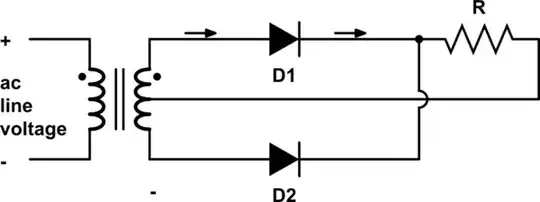
simulate this circuit – Schematic created using CircuitLab
'Microelectronics' by Sedra and Smith describes the behaviour of the above circuit (image taken from book): a transformer with an AC supply on its primary winding and a centre-tapped secondary winding with a rectifier.
It says that diode D1 conducts during the positive half-cycle while diode D2 is off. In the negative half-cycle, the opposite happens.
My question is regarding the direction of the secondary circuit's current. In up to period T/4, current will be increasing in the primary and magnetic flux will be increasing in the secondary winding. So current will flow through D1.
But from period T/4 to T/2, current will be decreasing in the primary, so magnetic flux will decrease in the secondary winding. According to Lenz's Law, shouldn't the direction of current in the secondary now be opposite to its direction in period 0 to T/4?
I mean, we are getting two opposite directions of current during the same positive half-cycle. But why this is not happening? Why we are getting same current direction in positive half cycle?
